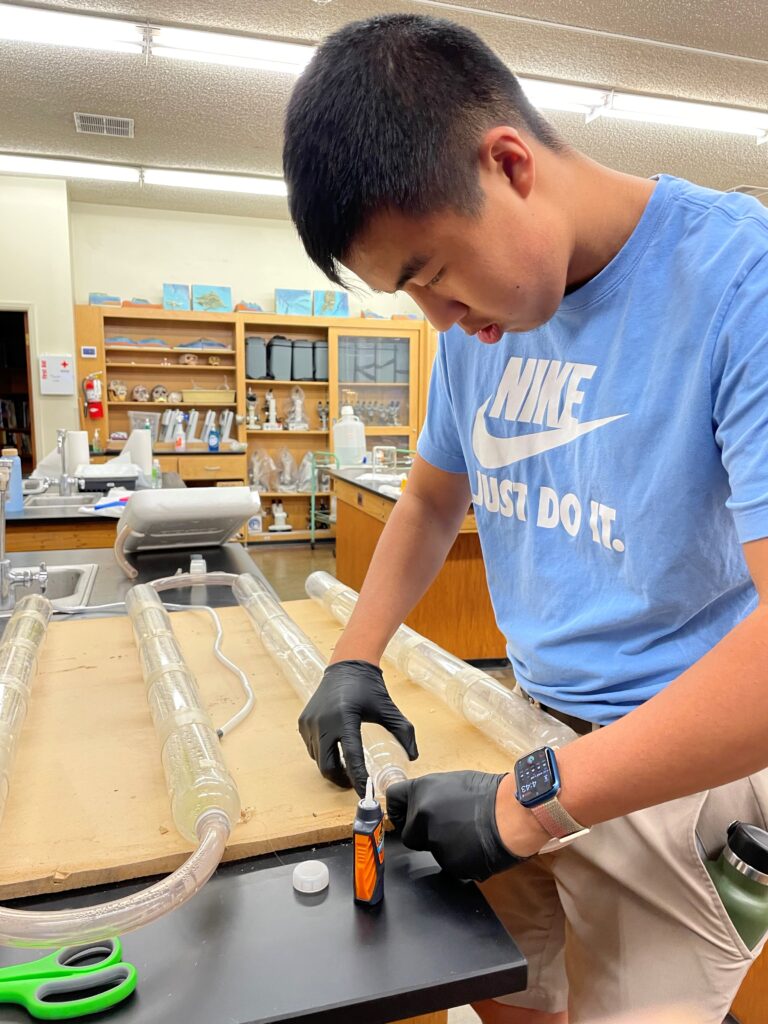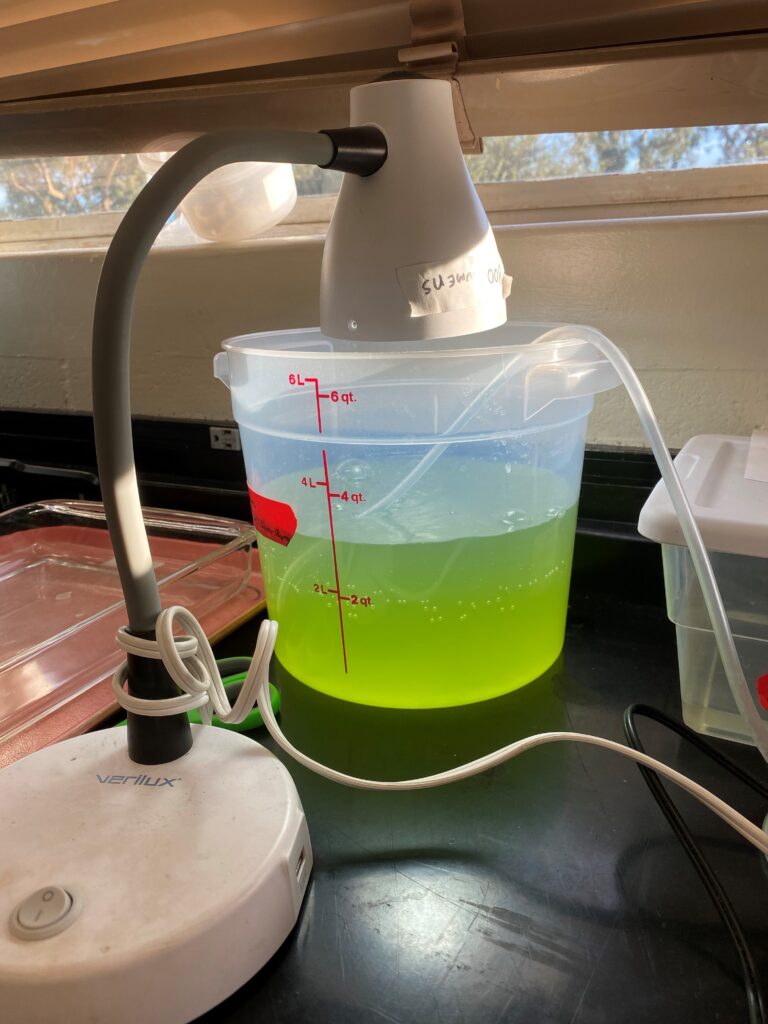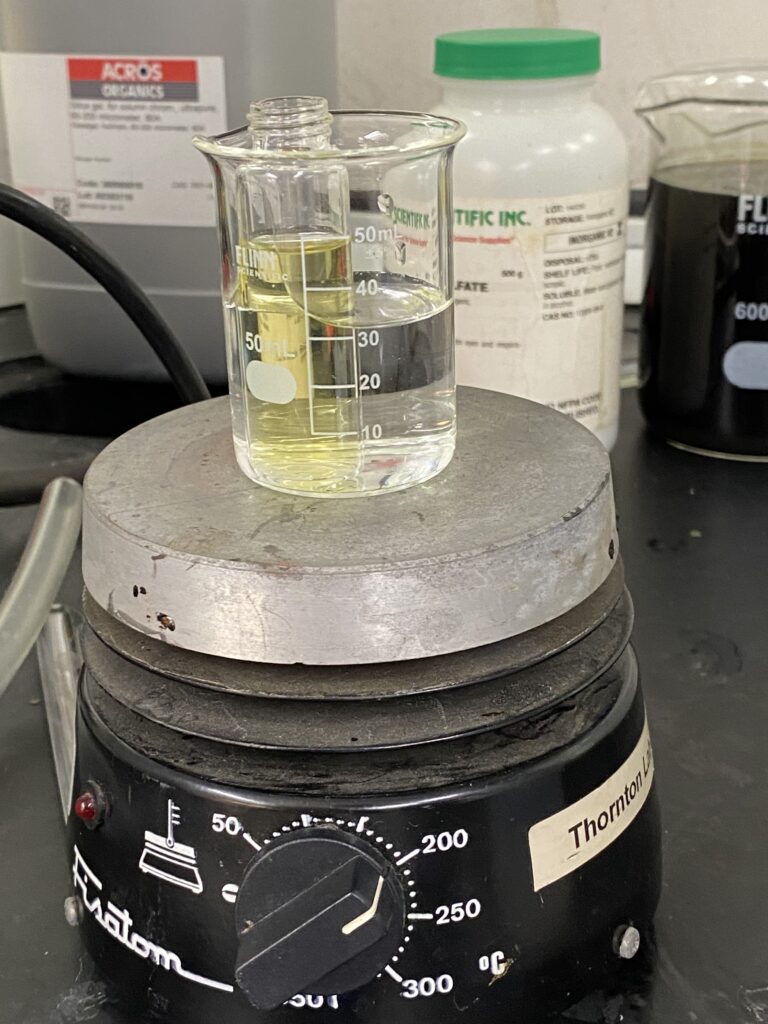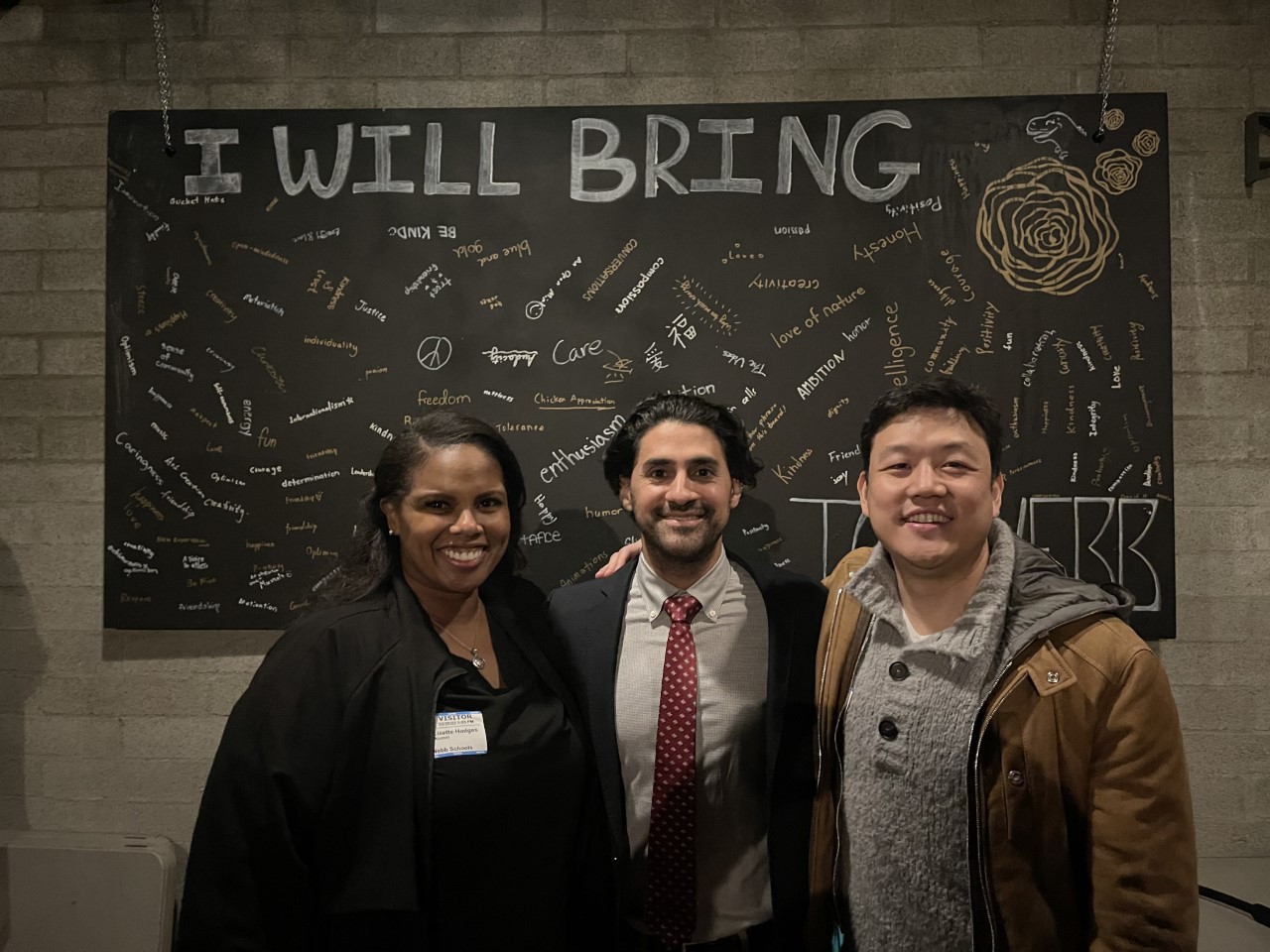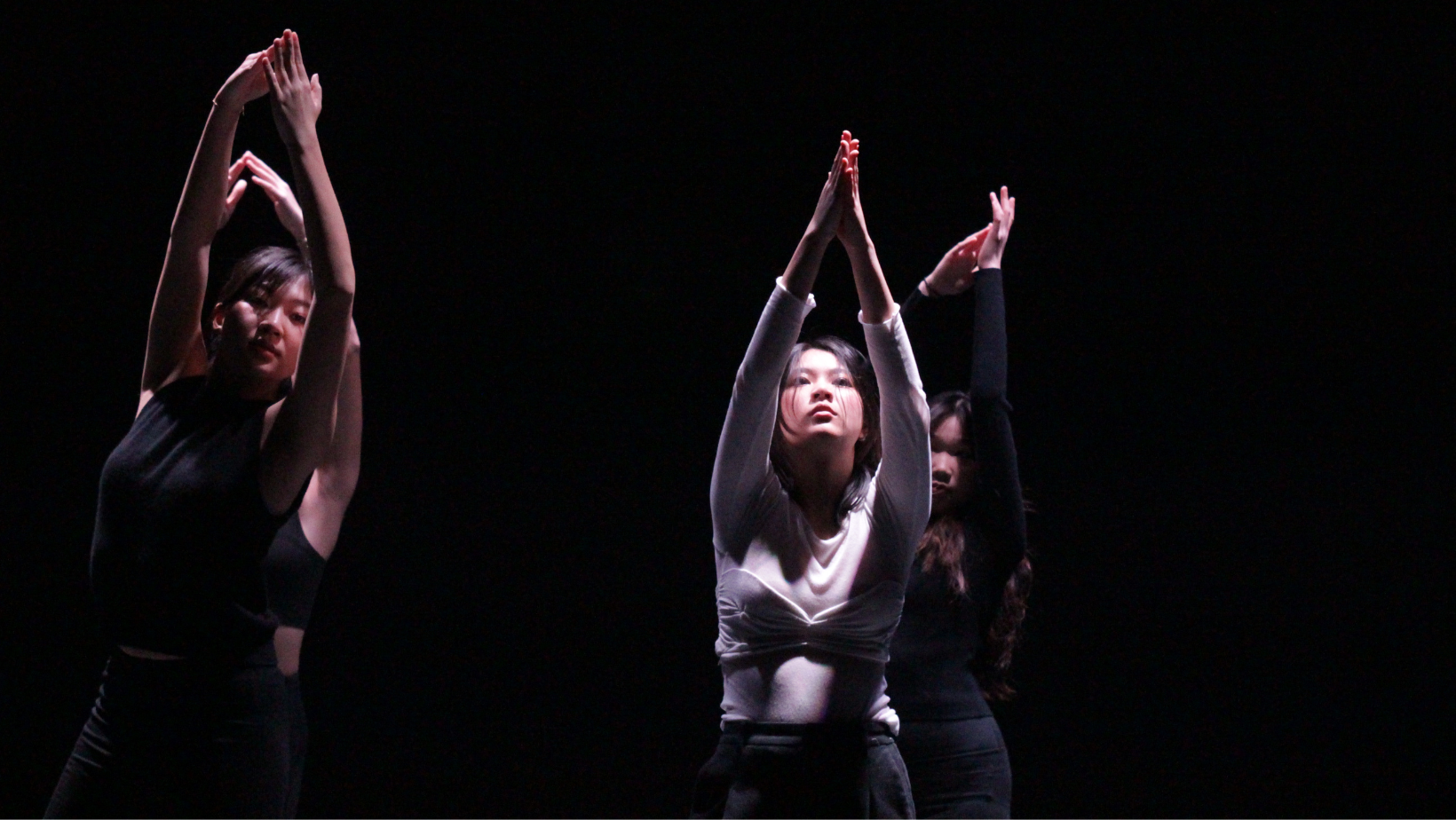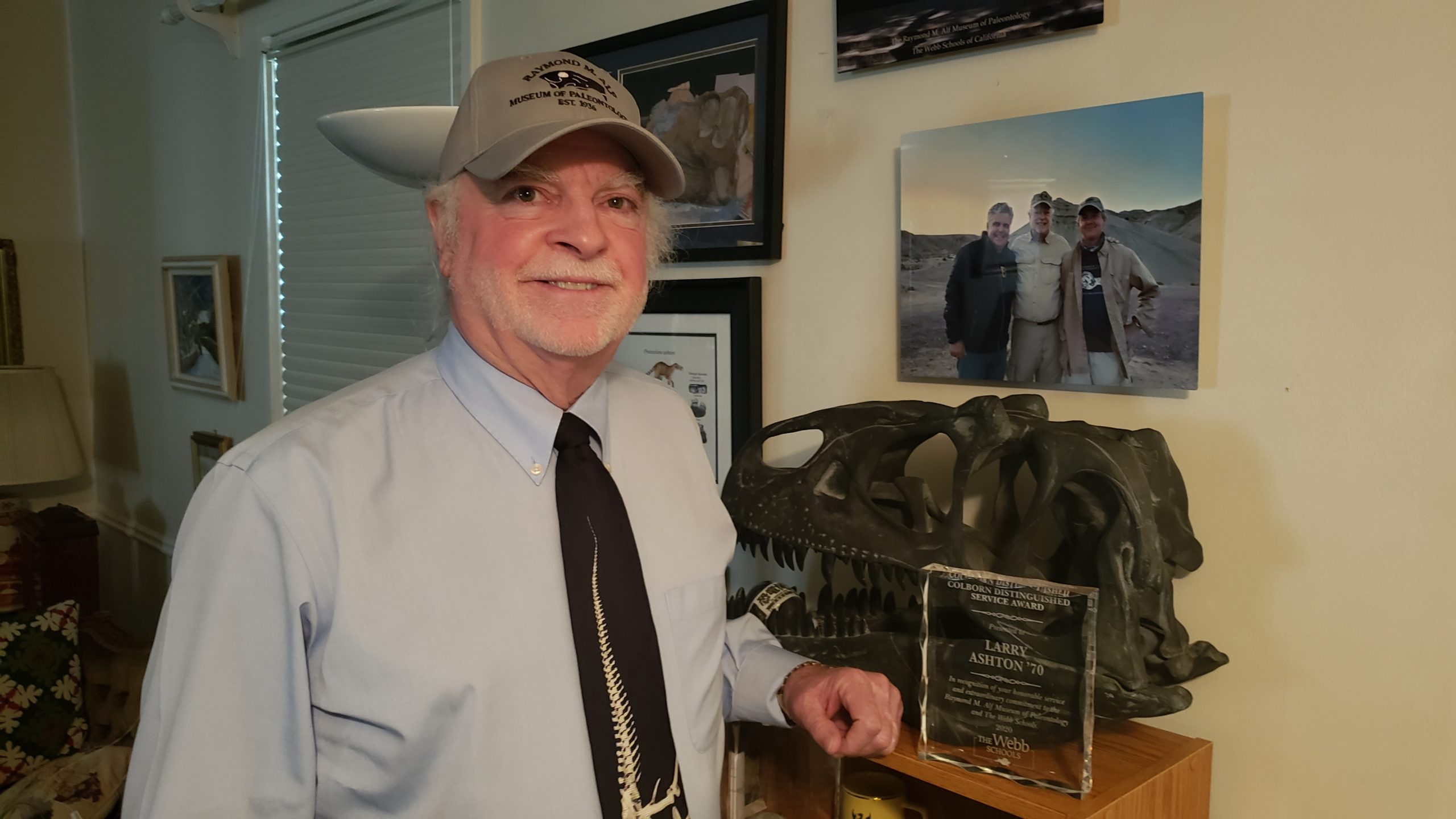Webb Students Compete in L.A. County Science Fair
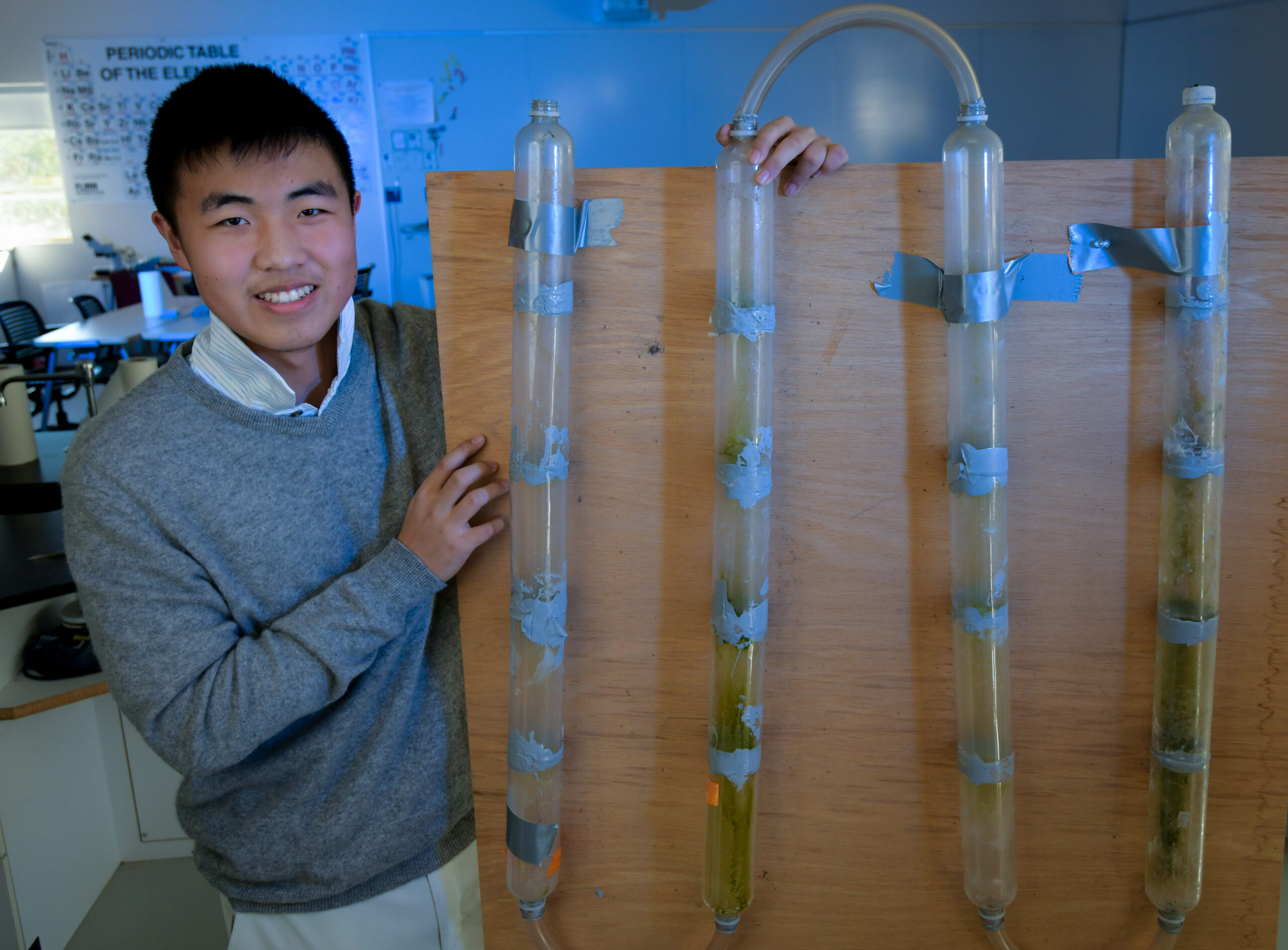
Bill Sun ’24 is fascinated by the power of algae – so much so that he spent half a year researching and building a photobioreactor that grows algae to generate a green fuel source.
Sehoon Kang ’24 and Garry Zhang ’24 are determined to find a way to create a green solvent from carbon dioxide, testing six kinds of metal-organic frameworks as they explored their options.
Ryan Ho ’25 extracted DNA from honey and used a PCR test to identify which flowers were the source of the bees’ nectar. Yvette Shu ’23 discovered how much microplastic is shed by fast fashion brands when exposed to UV light.
Michael Fu ’24 improved the design for an adaptable wheel that can more easily conquer vertical barriers. And Petrina Ong ’24 investigated how neurotransmitters affect the regenerative capacities of a flatworm.
In each case, the Webb students pursued their projects during the school’s Science Fair Research Lab afternoon activity under the guidance of teachers Joe Martin and Lisa Nacionales, who is also chair of Webb’s Science Department.
The activity helped students create projects for the Los Angeles County Science & Engineering Fair, which was held March 12-13. Also participating in the activity – and the science fair – were Eric Bi ’25, Elaine Tang ’24 and Chelsea Wei ’25.
“The science research lab helped me in in ways I never knew were possible,” said Ho, who took part in the afternoon activity for first time. “My project needed chemicals that weren’t usually accessible. Both activity leaders were also happy to guide us through our project.”
Kang said the teachers helped him and Zhang access X-ray diffraction analysis, gas chromatography-mass spectroscopy and nuclear magnetic resonance equipment. He credits that same support with helping him place third in the 2022 California Science & Engineering Fair and second in the 2022 Los Angeles County Science & Engineering Fair.
“Not only do I enjoy the resources and time the activity provides for students to pursue our scientific passion, but it also allows me to meet many talented and passionate students and collaborate,” Kang said.
Fu also appreciated combination of support and guidance.
“I just like the atmosphere where people focus on their own projects while sharing insights with each other, as well as the autonomy in planning my own time,” he said.
Ho put it even more simply: “Every afternoon in the lab always had a relaxing vibe, and it just felt like a place that welcomed creativity.”
In addition to the L.A. County science fair, Sun entered a second, even more demanding competition – the Southern California Junior Science and Humanities Symposium. He was among just 15 participants chosen for the symposium, held Feb. 25 at California State University, Bakersfield.
Sun said he is passionate about renewable energy.
“In middle school, I was intrigued by the idea of capturing energy from natural sources like the sun and wind, and I spent a lot of time reading about photovoltaics and wind turbines,” he said. “I was puzzled as to why solar panels were not everywhere, given their ability to generate energy passively. This curiosity led me to explore the process of photosynthesis, which I realized was already a very effective way of capturing energy.”
For his project, he used plastic bottles and plastic wrap to create an environment where algae could grow. He used distilled water and a vitamin solution to spur its growth, before using oil, methanol and a centrifuge to harvest the algae lipids.
It took him four months of research and two months of construction to complete the photobioreactor.
“I built six prototypes before settling upon my final design,” Sun said. “I had a great epiphany one night: what if we replaced the expensive vinyl solar modules with something more readily available and cheap, like plastic bottles, the cost will be practically eliminated. This simple idea sparked a period of personal growth for me, as I became more passionate about finding ways to reduce costs and waste through the use of reusable materials.”
Kang and Zhang worked on a project to convert carbon dioxide into a green solvent. The duo developed six types of frameworks for generating the solvent – a challenge given extreme reaction conditions and the lack of optimal catalysts.
“Our project is based on the reflection and advancement from our sophomore year Science Fair Research Lab activity, when Garry and I developed a novel technique of synthesizing metal-organic framework from the plastic bottles that we found in dining hall trashcan,” Kang said. “This year, we decided to apply for highly efficient capture and fixation of CO2 to solve environmental problems like greenhouse gasses and global warming.”
Fu’s work was inspired by a three-wheeled backpack he had in primary school. He wanted a way to create a dynamic mechanism and found a Tokyo university research project that had made strides toward an effective design.
“However, many of their design structures, such as the linkage system and a possible application of rotational movement, can be improved. So, I started designing my wheel,” he said.
The afternoon activity gave him time and space to design, build, modify and experiment.
“These transformable wheels can adapt to city landscapes such as stairs and thresholds on sidewalks. They can be applied to service robots, wheelchairs and transportation,” he said.
